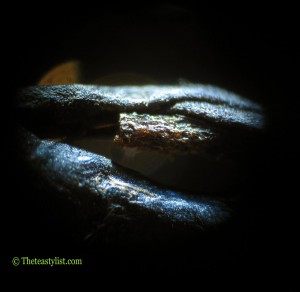Under the Microscope
I’m always pleased when I visit an online tea retailer and find that they have close-up shots of their premium teas. It is reassuring to be able to examine, photographically, the quality of the leaf before purchasing it. Reliable retailers know that we want to see the curl, the colour and the twist of the leaf. It should look as we expect and we hope when the goods arrive we can compare our new purchase with those pictures. Could we take it a step further and show the tea at greater magnification? – Not likely or necessary, but I thought it would be kind of neat to see how the tea leaf would look up close and personal. I discovered that Gunpowder isn’t the only tea that can be blown up!
Several decades ago we purchased a beautiful Olympus microscope. We had fun with it when our children were young and valued it enough to bring it along when we moved to a smaller home. It was stored away and while not forgotten, it was never used. This week I hauled it out of it’s wooden case to see if I could look into the heart of the tea leaf. I was surprised at the otherworldliness of what I found.


I was drinking a Himalayan black at the time, so placed a piece on the glass slide and had a look. I was taken aback by what I saw and almost didn’t include it because of its resemblance to fauna rather than flora! Spider legs? I continued with four other samples, using only dry leaf. I hadn’t expected to find the leaf’s inner world so beautifully revealed. I see caverns and stalagmites, the burnished wood finish of roasting and firing, a tender morsel of freshness and the thick fibrous texture of the leaf.
Can you Identify these Teas? (Answers now posted)
Most of us recognize our favourite teas at a normal glance, but this is a micro universe. The leaves give up inner secrets that explain why they need specific and individual attention in preparation. All from the same botanical plant, yet all so unique.
- Keemun Kong Fu from Tao Tea Leaf
- Anji Bai Cha from Camellia Sinensis
- Pu erh aged in Mandarin orange from Kan Man NYC
- Blue Beauty Oolong from Tea Source







